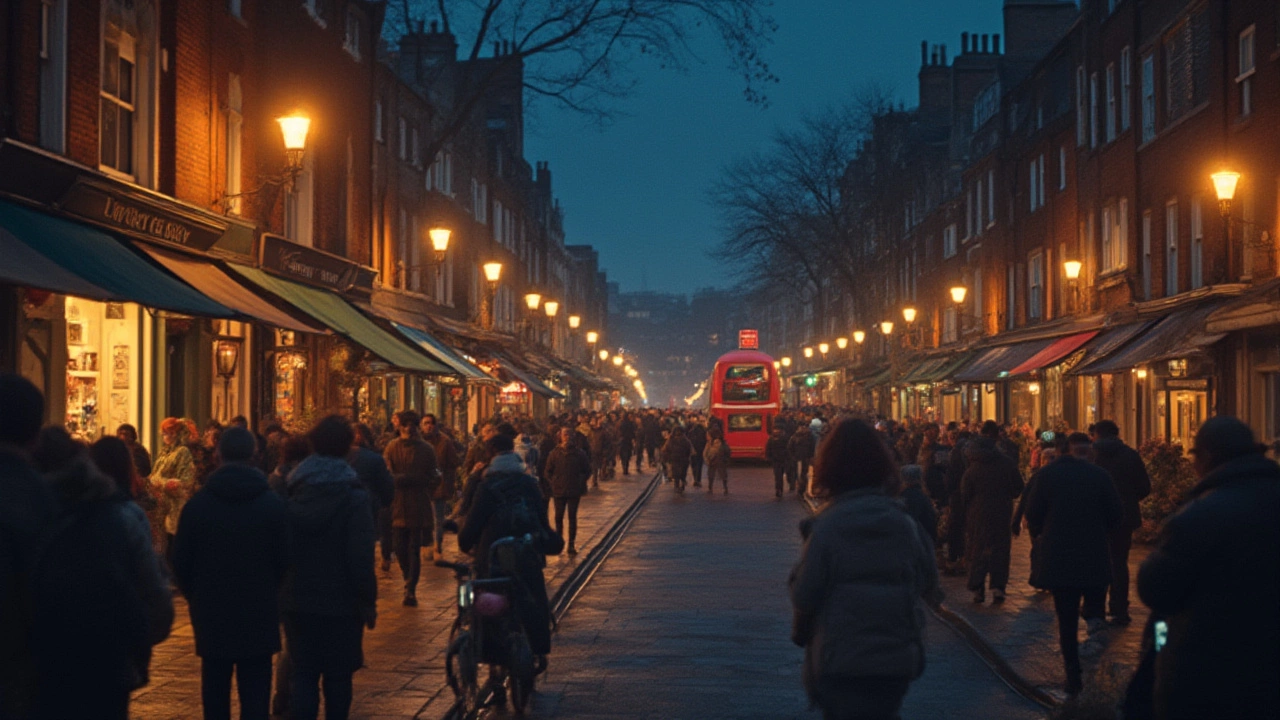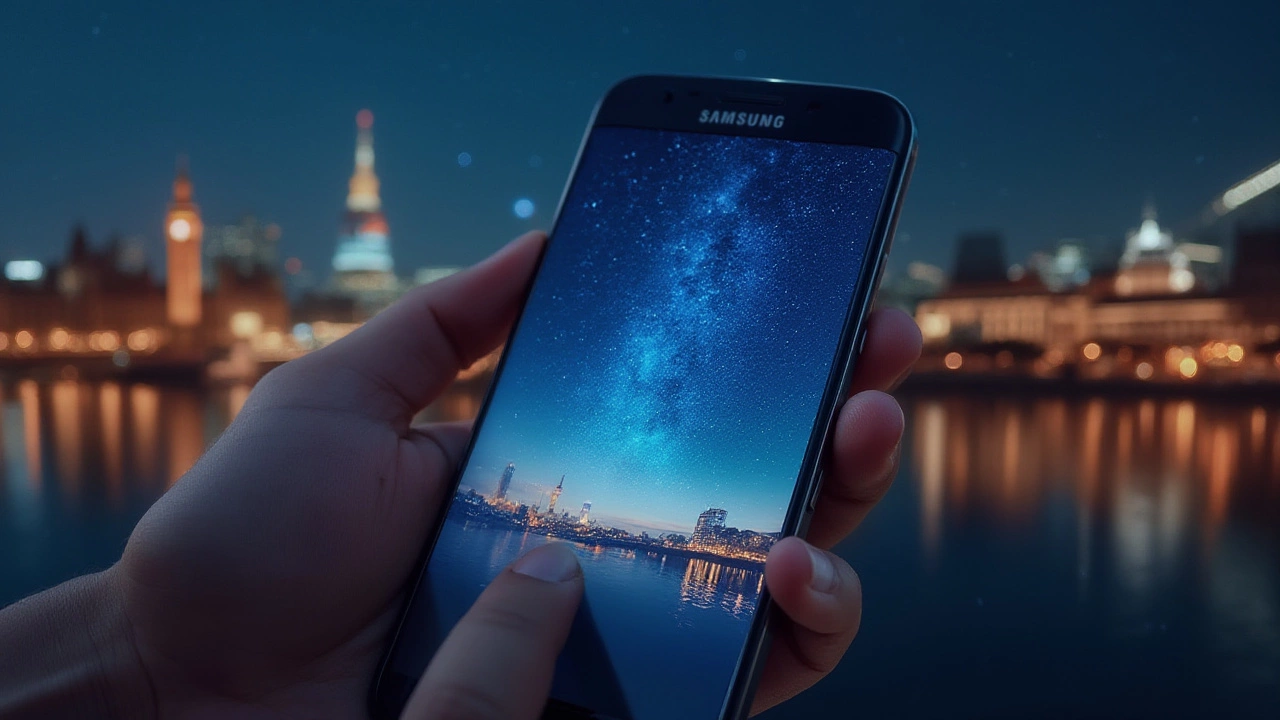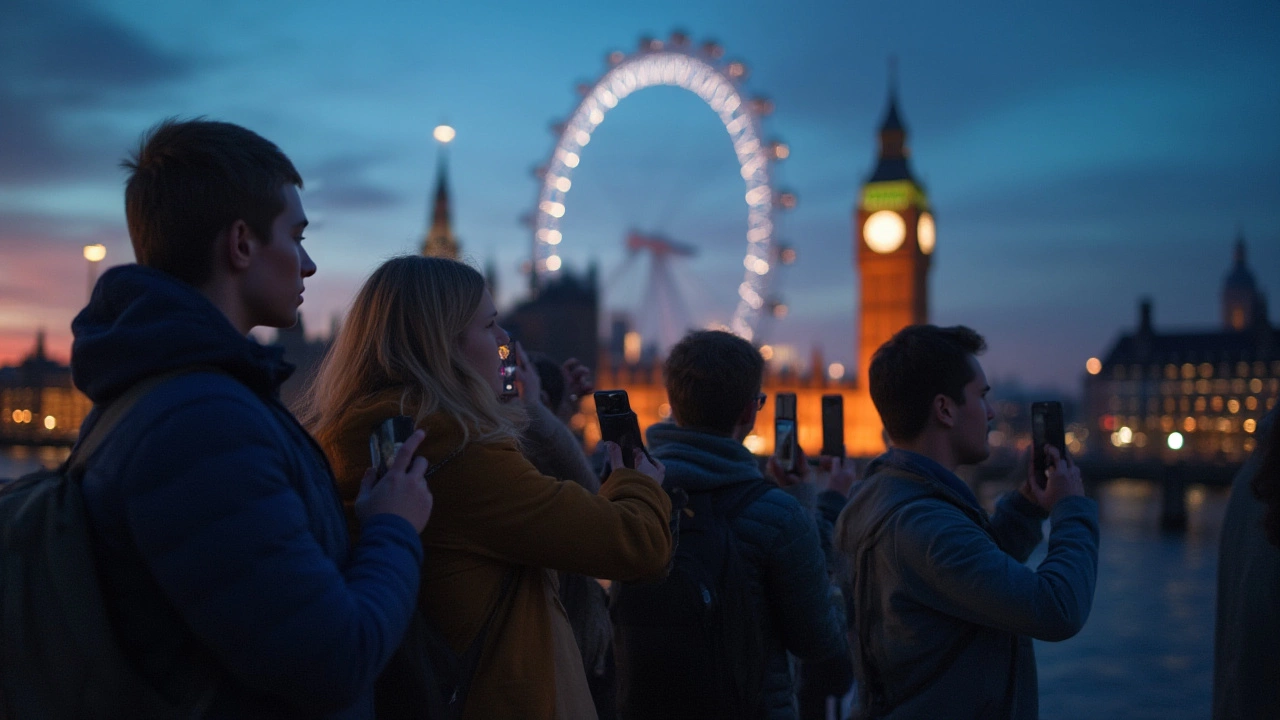If you’ve ever tried snapping a photo after sunset and wound up with a blurry, grainy mess, you know just how tricky nighttime photography can be. It’s not just about the camera hardware; it’s what happens inside the phone that counts. Samsung’s night mode camera has been turning ordinary city nights into Instagram-worthy shots for years. But figuring out which models actually have the feature — and whether it’s worth your money — isn’t always clear from the box or a spec sheet. Let’s dig into the details and see where things stand in 2025.
Why Night Mode Cameras Matter Now More Than Ever
Smartphones are basically mini-computers shoved into your pocket, and the camera is probably what you use the most after calls and scrolling. Night mode changed the game. Before Samsung introduced night mode back on the Galaxy S10 series, you were stuck with those classic washed-out, yellow-ish night photos unless you lugged around a DSLR or waited for the perfect sunrise. In 2025, night mode is almost expected in any flagship phone, but not every user is clear on what ‘night mode’ actually means or why Samsung keeps tweaking the formula.
What’s so special about night mode? Instead of the camera just boosting the brightness, Samsung’s software snaps a bunch of images in rapid fire, then blends them into a single, sharp photo. This cuts down noise and captures more detail, even when the only light comes from a street lamp or neon sign. That means your pub selfies or those quick shots on Rundle Mall at 10pm look much closer to reality — not like you’re taking photos through a pair of dirty sunglasses. According to Samsung’s internal testing in 2024, users saw a 38% improvement in low-light detail from the S21 to the S23 series thanks to algorithm upgrades.
People underestimate how useful this is. Maybe you’re taking family pics at a backyard gathering, trying to capture city lights on holiday, or you just want to document your new favorite takeaway burger under moody lighting. Night mode is your ticket to usable photos in situations where your old phone would’ve given up. And, for content creators or folks who love social media, better night shots mean more likes and less editing work. What’s wild is that now it’s even reaching midrange phones, not just the $1800 flagships.
Which Samsung Phones Actually Have Night Mode?
Let’s get specific: the first time night mode appeared in a big way was with the Samsung Galaxy S10 series. Since then, it’s spread through nearly every lineup, but the actual results you get do vary a lot. Here’s the honest rundown of what you can expect as of July 2025:
- Flagship S Series: All phones from the Galaxy S10 and up have some version of night mode on the main lens. S20, S21, S22, S23, and the current S24 Ultra — they not only have night mode, but it’s built into the wide, ultra-wide, and telephoto cameras.
- Galaxy Note Series: Night mode showed up starting with Note 10. From the Note 20 upwards, it’s been improved, pulling in more light and handling street scenes better than the first versions.
- Galaxy Z Fold and Flip: Samsung’s foldables weren’t left out. Night mode has been baked in since the Z Fold2 and Flip3. Latest models in 2024/2025 feature multi-frame processing to reduce graininess even more.
- Midrange A Series: It takes a little more searching here. Galaxy A51 and A71 (from 2019/2020) both got software night mode. Since 2022, night mode’s on A52, A53, A54, and the A73. You’ll see it in most of the A3x and A5x lineup after 2023 too, but avoid anything “Lite” as the feature can be cut on the cheapest versions.
- Galaxy M and F Series: Not as common, but models like the M31, M32, and newer M53 have received night mode support, though results won’t match an S series phone.
If you want a quick reference, here’s a comparison table of key Samsung models and their night mode:
| Model | First Released | Night Mode Supported | Main Camera Megapixels |
|---|---|---|---|
| Galaxy S24 Ultra | 2024 | Yes (Main/UltraWide/Telephoto) | 200MP |
| Galaxy S23 Series | 2023 | Yes (Wide/UW/Tele) | 200MP (Ultra) |
| Galaxy Z Fold5 | 2024 | Yes | 50MP |
| Galaxy A54 5G | 2023 | Yes (Main) | 50MP |
| Galaxy A34 5G | 2023 | Yes (Software-based) | 48MP |
| Galaxy M53 5G | 2022 | Yes | 108MP |
| Galaxy S10 | 2019 | Yes (Main) | 16MP/12MP |
If you’re not sure about your own Samsung, open the Camera app and look for “Night” or a crescent moon icon in the shooting modes. If it’s there, you’ve got night mode.

How Samsung’s Night Mode Works (And What Sets It Apart)
Your phone does something clever when you tap the night mode. Instead of one long photo, it takes a stack of shots at different exposures (fast, slow, and sometimes even milliseconds apart). Samsung then uses its own algorithm — you’ll hear this called multi-frame image processing — to merge the best parts of each shot. The result? More detail in shadow areas, sharper lights, less ugly digital noise. Since the Galaxy S22 series, Samsung ramped up something called “Adaptive Pixel” tech, which basically captures a standard and a high-res photo, then stitches them together. You can actually see the difference: headlights and neon signs don’t turn into blown-out blobs, and faces won’t look like they’re shot through a dirty window.
What makes Samsung’s approach different from Apple’s or Google’s? Samsung lets you use night mode across all the rear cameras on its top models — not just the main. That means ultra-wide star shots and even night selfies on some models. Since the S23 Ultra, there’s also “Night Portrait,” which combines the fuzzy background look (bokeh) with low-light capture, making your night portraits pop. Keep in mind, midrange models lean more on software tricks because their cameras aren’t as sensitive to light. Don’t expect miracles from a $350 A14, but you’ll get way more usable shots than you did three years ago.
Here’s a trick: You don’t always need to hold your phone super still anymore. Earlier versions demanded dead-still hands. From Galaxy S22 and up, built-in optical image stabilization (OIS) on even the cheaper A54 means you can grab night photos even from a moving tram window with decent results. One thing many folks miss — night mode works best if you tap to focus on the lightest part of your scene (like a friend’s face) instead of letting the phone decide. It tweaks the exposure and boosts the sharpness where it counts most.
Battery life got you worried? Night mode does use more processing power, but Samsung’s chips are way more efficient these days. You might notice the phone gets a little warm with a long night photo session, but unless you’re shooting for an hour straight, it won’t drain more than two to three percent per twenty shots. Not bad considering what’s happening behind the scenes.
Tips for Getting the Best Night Mode Photos on Samsung Phones
Night mode isn’t magic — though it’s pretty close — but you can push things even further with a few tested tricks. Want to wow your mates with killer rooftop or festival pics? Do this:
- Keep the phone steady. If you can, brace your hands or prop your phone on a solid surface like a wall or coffee table. Shaky hands can make multiple frames messy.
- Use the timer. Fire the shutter using a 2-second timer to avoid jostling the camera when you tap.
- Focus on the brightest subject. If somebody’s holding a sparkler or you’re up against lots of streetlights, tap the brightest area so faces stay sharp.
- Avoid using zoom for night shots, unless you have an S Ultra model. Zoomed night mode on cheaper phones often looks soft and can get noisy.
- Experiment with manual Pro Mode (if you have it). Lower ISO and longer shutter speeds sometimes beat auto mode if you’re patient.
- Know your phone’s limits. Midrange phones will often struggle in pitch-dark parks — stick to areas with at least some ambient light.
- Update your software: Samsung pushes camera upgrades behind the scenes, and night mode improvements often arrive months after launch. A simple software update can sharpen results even more.
- Consider lens cleaning. Wipe the lens clean before shooting — a single fingerprint can turn a night masterpiece into pixelated soup.
- Use night mode for video: Galaxy S22 and up let you use “Nightography” video in dark scenes. You lose some sharpness, but it’s legit for club and concert footage.
Here’s a bit of fun: On the S24 Ultra, users report that night sky photos (stars, moon, and Milky Way) look even cleaner if you let the phone rest on something solid for about 10 seconds in night mode. It’s not quite telescope-level, but definitely Instagram-worthy. Noise is always the enemy in low light, so anything you can do to keep your phone still while it grabs those frames helps a ton.
And if you’re shooting in a dim pub or club? Ask friends to freeze for a second or two. Movement plus low light is still tough for even the fanciest phone.

Upcoming Night Mode Tech and Features Worth Watching
Samsung never stops doing camera testing — and in 2025, some pretty cool updates are in the pipeline, if leaks and camera nerd blogs are to be believed. For one, they’re working on improved AI-powered scene detection. This means future Galaxy phones won’t just boost the light but can recognize when you’re shooting street food, neon signs, or cityscapes and adjust accordingly. AI-based “Scene Optimizer” already ships with Galaxy S23 and S24, but the next-gen update is set to sharpen human faces even clearer, even if they’re moving.
Samsung’s astrophotography mode — think Milky Way shots from your backyard — is getting tweaks, with special AR overlays to help you find constellations. Galaxy S24 Ultra users in Australia have started to notice the feature after the June 2025 update. Some models are now blending 20+ images to reduce noise, up from the old 12 or 15, giving you more natural skies and cleaner stars.
Another thing reportedly coming is deeper “Night Video” with less frame-dropping, plus new sound options for recording at concerts or busy city areas after dark. Nothing worse than a crispy night video with tinny, blown-out audio, right? The update aims to sync better audio capture with your visuals.
There’s also a push toward better night mode selfies. Front cameras traditionally struggle with low light. The latest Samsung AI can brighten faces in night mode, dodge harsh shadows, and smooth out grain without turning everyone into pale ghosts. If you love night portraiture, expect 2026 phones to take things up a notch.
For folks in rainy, humid places (looking at you, Queenslanders), Samsung’s bringing water-repellent lens coatings to more models. This stops water spots and fog from ruining your midnight stormy snaps — super handy in Australia’s unpredictable weather.
And don’t ignore third-party camera apps. Some give you more manual control over exposure and focus. While Samsung’s night mode is solid, camera geek apps like Open Camera (for Android) or ProCam X offer fun extra options if you like tweaking settings yourself. But for 99% of users, the built-in night mode just saves time and guesswork.
Last tip: Samsung has been rolling out remote updates for camera features more regularly than ever. Even if you bought your phone in 2023, it’s worth checking every couple of months — you might find your low light photos just levelled up overnight.

